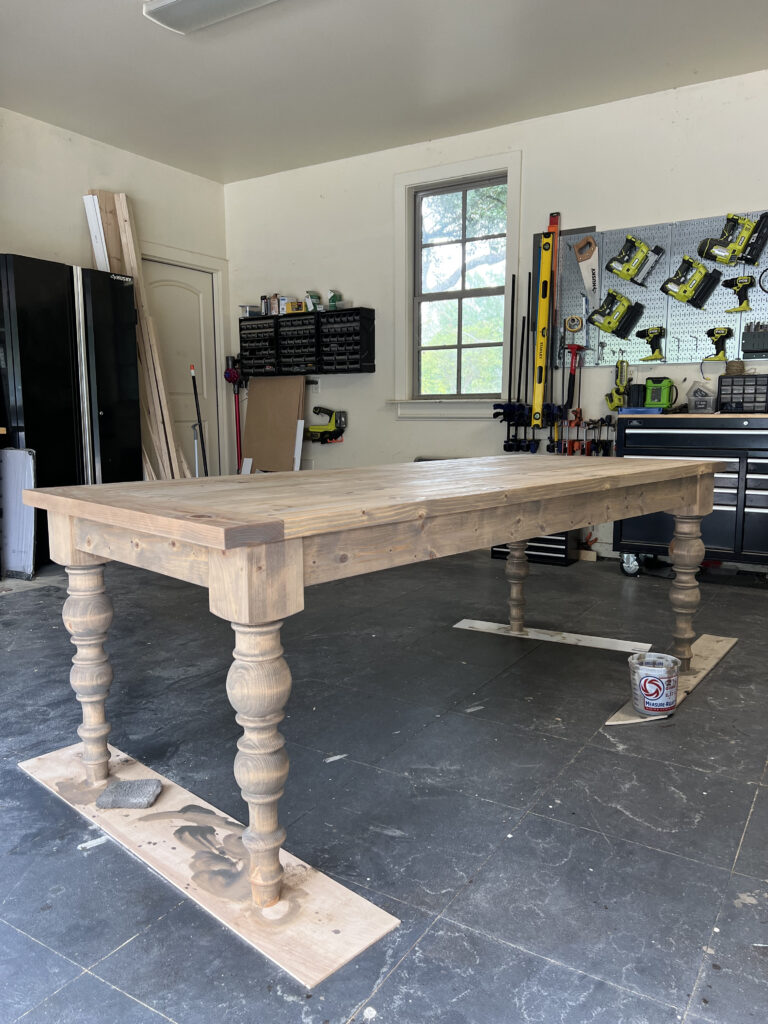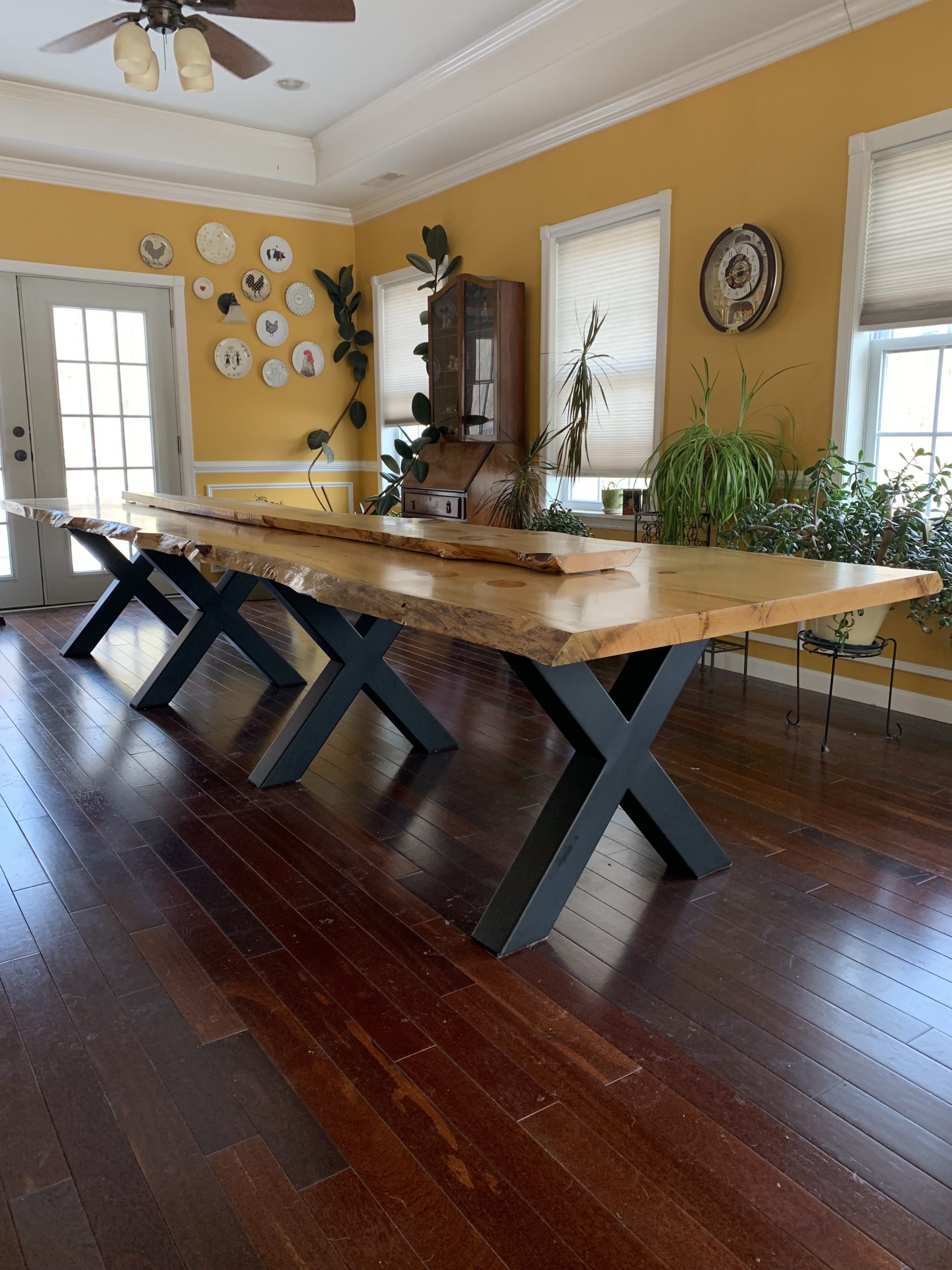Key Factors to Bear In Mind for Table Legs Timber Choices
When selecting wood for eating table legs, a number of vital elements warrant cautious factor to consider to make sure both capability and visual charm. The choice of timber type, identified by its sturdiness and distinct grain patterns, plays a crucial function in the total layout and durability of the item. Additionally, one should contemplate maintenance needs and the environmental ramifications of sourcing materials. As these aspects intertwine, they significantly affect the last outcome of your table. Comprehending the nuances of each factor can be complex, leading to crucial choices that merit additional expedition.
Wood Types and Qualities
When choosing wood for dining table legs, it is essential to understand the distinct attributes of various timber kinds. Various timbers provide distinctive benefits and drawbacks, affecting both the durability and aesthetic allure of the finished item.
Hardwoods, such as cherry, oak, and maple, are commonly liked for their stamina and resistance to use. Oak, understood for its outstanding toughness, likewise features a prominent grain that can add character to the table. Maple offers a smooth surface area and is much less vulnerable to bending, making it a trusted selection for useful furnishings. Cherry wood, with its abundant shade that deepens with time, supplies a glamorous appearance but might require even more maintenance to avoid scrapes.
On the various other hand, softwoods like want and fir are extra inexpensive and simpler to function with, yet they are less sturdy than woods. Pine is lightweight and includes a cozy, rustic appearance, making it a favored selection for casual eating setups. It is extra at risk to scratches and damages.
Understanding these features will assist in making an informed choice to make certain the legs of the dining table fulfill both aesthetic and useful requirements.
Grain Patterns and Looks
The wood's grain is not just an aesthetic quality; it conveys an one-of-a-kind character and appeal to each piece. Different wood types display unique grain patterns, varying from the straight lines of maple to the detailed swirls of oak and the striking number of walnut.
In addition, the positioning and scale of the grain can affect the viewed size and beauty of the table. Larger, much more pronounced grains might lend a bold, significant impact, while finer, subtler grains can produce a fine-tuned, downplayed look. In addition, the finishing process can further boost these patterns, highlighting the all-natural charm of the wood and highlighting rich shades.
Ultimately, the choice of grain pattern ought to integrate with various other style elements, such as the table top and bordering furnishings, making sure a cohesive visual that elevates the dining experience. Thoughtful selection of wood grain not only adds to the table's appeal however also mirrors the owner's preference and style.
Longevity and Stamina
The durability and toughness of eating table legs are vital factors to consider for making certain longevity and stability in any kind of dining area. Picking the right timber is important, as various types exhibit differing degrees of durability. Woods such as maple, cherry, and oak are frequently liked for their inherent strength and resistance to put on. These materials not only hold up against day-to-day usage yet likewise support hefty tons, making them suitable for eating tables that often fit multiple diners. Dining Table Legs Wood.

Inevitably, purchasing top notch timber and durable construction approaches will certainly produce a dining table that stands the examination of time, while offering a reliable foundation for countless dishes shared among friends and family. Prioritizing resilience and strength guarantees that your dining table remains functional and visually pleasing for many years to come.
Upkeep and Care
Appropriate upkeep and treatment are important for maintaining the toughness and stamina of dining table legs made from wood. Normal cleaning is necessary; utilizing a soft, wet towel guarantees that dirt and particles do not build up, which can bring about scratches and monotony. It is advisable to avoid extreme chemicals or unpleasant materials that could damage the surface.
Additionally, Recommended Reading using a suitable timber gloss or wax regularly can assist maintain the luster and secure the timber from dampness and spills. However, it is crucial to comply with the maker's recommendations relating to the kind of product to utilize, as specific surfaces might react negatively to certain chemicals.
Moisture and temperature variations can additionally influence wood table legs, triggering them to warp or split. It's best to position the table away from straight sunshine and warmth resources. Attending to these immediately can protect against further damage. if the table legs have any type of scratches or dents.
Last but not least, occasionally examining the joints and screws for tightness is essential to keep architectural integrity (Dining Table Legs Wood). By sticking to these maintenance techniques, homeowners can guarantee their wood dining table legs remain practical and enticing for many years to find
Environmental Factors To Consider
When choosing wood for dining table legs, it's necessary to take ecological factors to consider right into account. The sourcing and sustainability of wood are paramount in decreasing ecological influence. Going with timber from licensed sources, such as those supported by the Woodland Stewardship Council (FSC), makes certain that the hardwood is gathered sensibly, advertising woodland conservation and biodiversity.

Furthermore, neighborhood sourcing of timber lowers transportation emissions, supporting neighborhood economic situations while minimizing ecological effect. It is additionally suggested to be familiar with the timber's therapy and ending up processes, as certain chemicals can be harmful to both human health and wellness and the atmosphere. By prioritizing lasting timber options, customers can add to ecological conservation while appreciating the sturdiness and charm of their table legs.
Final Thought
In conclusion, selecting wood for dining table legs demands cautious consideration of numerous elements, including timber kinds, grain patterns, and sturdiness. The aesthetic allure of distinct grain patterns can enhance the total layout, while the toughness of woods makes sure durability. Upkeep needs and ecological sustainability further impact timber selections, highlighting the value of sourcing from accredited or recovered materials. A notified choice procedure ultimately adds to a visually appealing and useful dining area that lines up with sustainable methods.
When choosing wood for dining table legs, numerous important factors require cautious consideration to ensure both capability and aesthetic allure.Proper maintenance and care are important for this protecting the toughness and toughness of eating table legs made from timber.When selecting timber for dining table legs, it's necessary to take ecological considerations into account. By focusing on lasting wood choices, customers can contribute to environmental conservation while enjoying the toughness and appeal of their dining table legs.
In verdict, selecting wood for eating table legs demands careful consideration of various aspects, including wood types, these details grain patterns, and sturdiness. Dining Table Legs Wood.